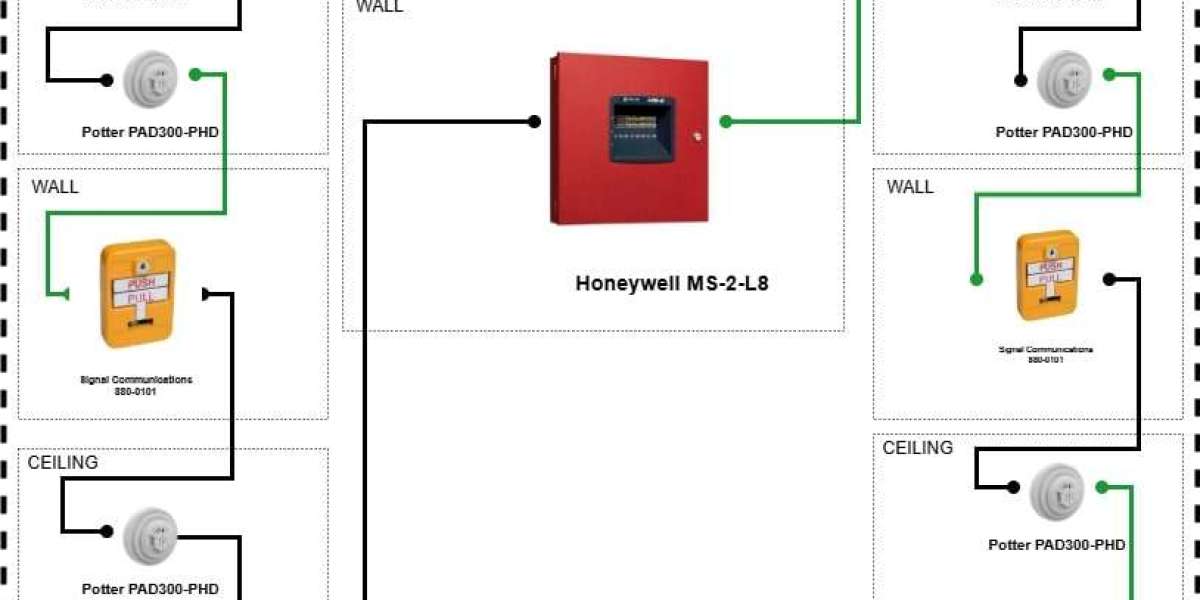XTEN-AV continues to set the benchmark for advanced solutions in building safety and automation. As fire safety regulations evolve and building designs become more complex, the importance of a robust and well-planned fire alarm system cannot be overstated. Fire alarm system design is not just about installing detectors and alarms. It is a meticulous process that involves understanding building layouts, occupancy types, regulatory compliance, and integration with other safety systems. In 2025, leveraging modern tools and best practices will make your fire alarm system more reliable, scalable, and effective in protecting lives and property.
Step 1: Understand Regulatory Requirements and Standards
Before initiating any fire alarm system design, familiarize yourself with local, national, and international fire safety codes. In many regions, standards such as NFPA 72, ISO 7240, or local fire codes dictate the minimum requirements for fire detection, notification, and system testing. Compliance with these standards ensures legal adherence and increases safety. Knowing these requirements early in the process will help you avoid costly redesigns or compliance failures later.
Step 2: Conduct a Comprehensive Risk Assessment
Every building has unique risks based on its structure, use, and occupancy. Conducting a detailed risk assessment involves identifying potential fire hazards, high-risk zones, and the most vulnerable areas. This analysis helps determine the type and placement of detectors, manual call points, and alarm notification appliances. For example, kitchens and electrical rooms may require heat detectors, while corridors and open spaces may rely on smoke detectors.
Step 3: Develop a Detailed Building Layout Plan
Accurate building plans are the backbone of an effective fire alarm system design. Using CAD or BIM tools in 2025 allows designers to map out the building structure in detail. This plan should include floor layouts, room sizes, ceiling heights, and locations of critical infrastructure. Understanding these spatial parameters helps in selecting the right types of detectors and ensuring proper coverage without leaving blind spots.
Step 4: Select Appropriate Detection Devices
Modern fire alarm systems offer a range of detection devices, including smoke detectors, heat detectors, flame detectors, and multi-sensor devices. The choice of detector depends on the environment and identified risks. Smoke detectors are ideal for offices and residential areas, while heat detectors may be better for kitchens, garages, or industrial zones. Multi-sensor detectors, which combine smoke and heat sensing, are increasingly popular in 2025 due to their improved accuracy and reduced false alarms.
Step 5: Plan Alarm Notification and Communication Systems
A critical aspect of fire alarm system design is ensuring occupants are promptly notified in case of an emergency. Audible alarms, visual strobes, and voice evacuation systems are all options. In large or multi-story buildings, a zoned alarm system is essential to guide occupants safely. Modern fire alarm systems can integrate with building management systems, public address systems, and even mobile notification apps, offering real-time alerts and evacuation guidance.
Step 6: Design the Fire Alarm System Wiring and Power Supply
The wiring and power design of a fire alarm system is fundamental to its reliability. Designers must plan for primary and backup power supplies, circuit layouts, and signal paths. Fire alarm systems often require dedicated circuits to avoid interference from other building electrical loads. Using digital design tools helps visualize the wiring network, ensuring redundancy and minimizing the risk of system failure during an emergency.
Step 7: Incorporate Integration with Other Building Systems
In 2025, fire alarm systems are rarely standalone solutions. Integration with other building systems such as access control, HVAC, CCTV, and emergency lighting enhances safety and operational efficiency. For example, smoke detectors can trigger HVAC shutdowns to prevent smoke spread, or signal access control systems to unlock emergency exits. Proper integration requires careful planning to ensure seamless communication between systems without compromising reliability.
Step 8: Validate and Test the Design
Once the fire alarm system design is complete, thorough testing and validation are essential. This involves simulating fire scenarios to verify detector coverage, alarm activation, and communication with integrated systems. Documentation of these tests is critical for compliance and maintenance purposes. Regular testing after installation ensures the system remains functional and meets evolving safety standards.
Step 9: Documentation and Maintenance Planning
A comprehensive fire alarm system design includes detailed documentation. Floor plans, wiring diagrams, device specifications, and maintenance schedules must be maintained. A well-documented system simplifies troubleshooting, facilitates regulatory inspections, and allows for easier upgrades in the future. Maintenance planning is also crucial to ensure detectors, alarms, and control panels remain operational throughout their lifespan.
Step 10: Embrace Advanced Tools and AI-Powered Solutions
In 2025, AI and advanced design tools are transforming fire alarm system design. AI can optimize detector placement, predict potential failure points, and suggest cost-effective configurations. Cloud-based design software allows teams to collaborate in real time, making updates, revisions, and approvals faster and more efficient. Leveraging these technologies ensures that your fire alarm system is not only compliant but also future-ready.
Conclusion
Designing a fire alarm system in 2025 requires a methodical and forward-thinking approach. From understanding regulatory requirements to selecting detectors, planning notifications, and integrating with other building systems, each step is critical to ensuring maximum safety and efficiency. Fire alarm system design is no longer just about compliance; it is about leveraging modern tools and technology to create intelligent, reliable, and scalable solutions. By following these steps and utilizing advanced design platforms, professionals can build fire alarm systems that meet the demands of modern buildings and safeguard lives and property effectively.













